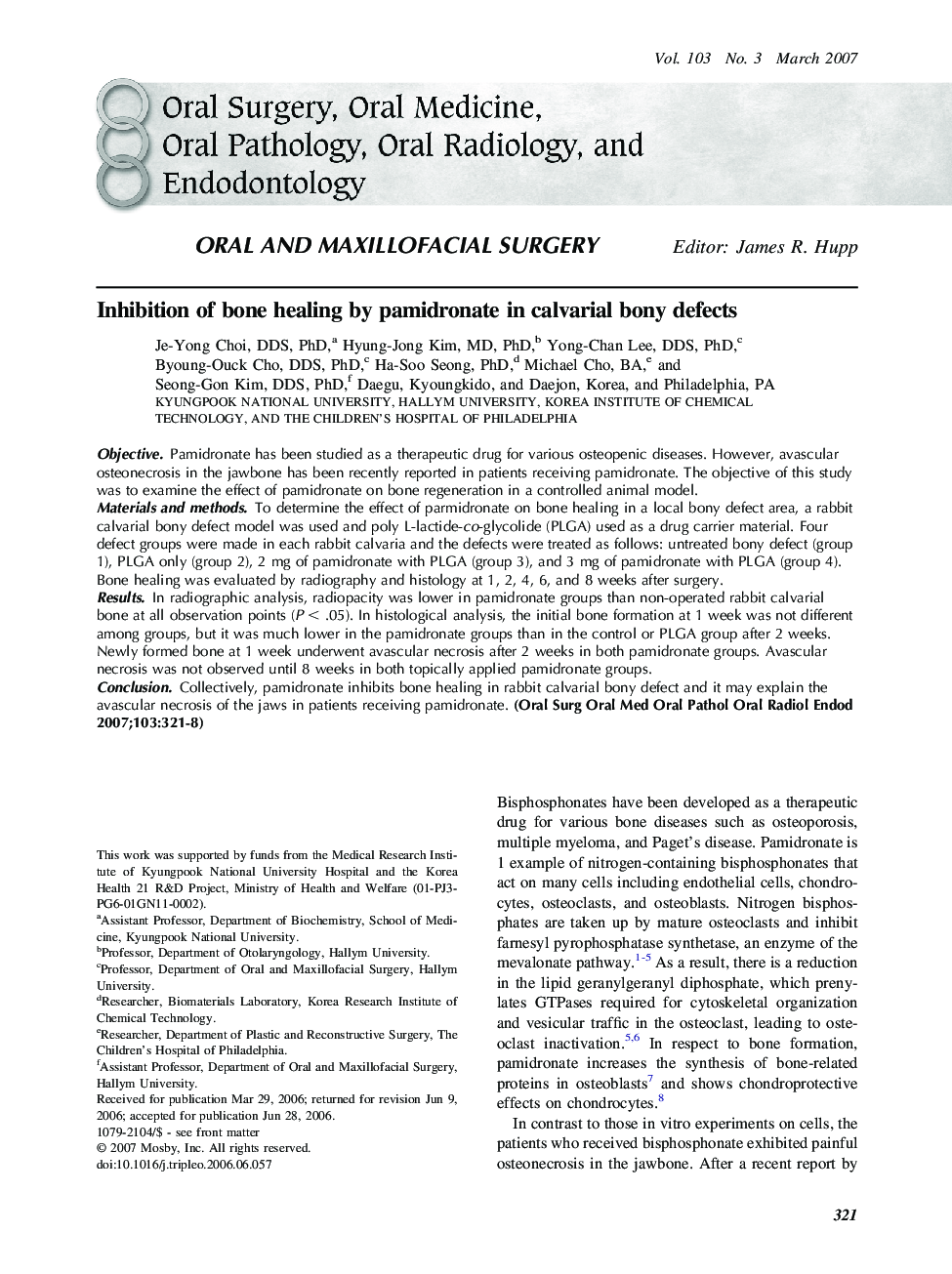| Article ID | Journal | Published Year | Pages | File Type |
|---|---|---|---|---|
| 3169512 | Oral Surgery, Oral Medicine, Oral Pathology, Oral Radiology, and Endodontology | 2007 | 8 Pages |
ObjectivePamidronate has been studied as a therapeutic drug for various osteopenic diseases. However, avascular osteonecrosis in the jawbone has been recently reported in patients receiving pamidronate. The objective of this study was to examine the effect of pamidronate on bone regeneration in a controlled animal model.Materials and methodsTo determine the effect of parmidronate on bone healing in a local bony defect area, a rabbit calvarial bony defect model was used and poly L-lactide-co-glycolide (PLGA) used as a drug carrier material. Four defect groups were made in each rabbit calvaria and the defects were treated as follows: untreated bony defect (group 1), PLGA only (group 2), 2 mg of pamidronate with PLGA (group 3), and 3 mg of pamidronate with PLGA (group 4). Bone healing was evaluated by radiography and histology at 1, 2, 4, 6, and 8 weeks after surgery.ResultsIn radiographic analysis, radiopacity was lower in pamidronate groups than non-operated rabbit calvarial bone at all observation points (P < .05). In histological analysis, the initial bone formation at 1 week was not different among groups, but it was much lower in the pamidronate groups than in the control or PLGA group after 2 weeks. Newly formed bone at 1 week underwent avascular necrosis after 2 weeks in both pamidronate groups. Avascular necrosis was not observed until 8 weeks in both topically applied pamidronate groups.ConclusionCollectively, pamidronate inhibits bone healing in rabbit calvarial bony defect and it may explain the avascular necrosis of the jaws in patients receiving pamidronate.
